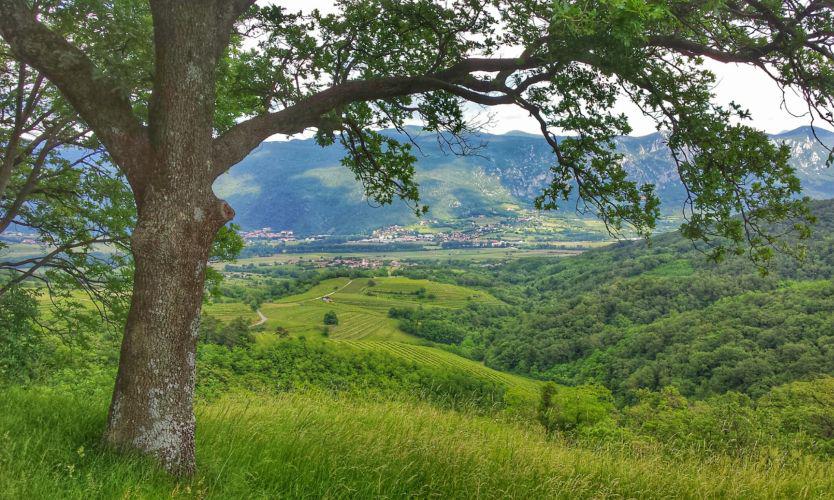
Planina is renowned for its orchards, especially apricots, but what the locals are most proud of is wine. Their most famous produce is the Pinela wine, which is why this scattered settlement consisting of clustered hamlets organises a festival of Pinela every year on Easter Monday.
The first mention of Vipava’s endemic grapevine dates back to 1324 and has been growing merely in the Vipava Valley. It prefers poor soil with marl and sunny elevated locations – which makes Planina the perfect place for this. We paid a visit to three renowned vintners.
Peter Ferjančič, who runs Vina Ferjančič, is a simple man, a vintner with all his heart. He sets out glasses under an old chestnut that dominates the courtyard of his homestead. The first drink to pour is Pinela, of course. The Ferjančič family strives to work in harmony with nature, with as little pesticides and as few interventions to the barrels as possible. They have an impressive collection. In addition to Pinela, we also tasted Zelen, which is another wine type native to Vipava and has nearly gone extinct before being revived in the 1980s.
The Štokelj family runs a small business that puts quality first, which is why their wine is on offer in Slovenia’s best restaurant. Pinela is their flagship wine. In the past year they’ve also started working on developing sparkling wine, which is made of 100% Pinela using classical methods. In addition to wine, the family serves home-made dry meat, the neighbours’ cheese and marinated olives on a wooden plate. Their Rosé (made of 100% Merlot) is probably one of the top three Rosé wines in the country, if not the best.
Planina’s largest and experienced vintner in terms of marketing is Guerila. Zmago Petrič and his consultant, sommelier Martin Gruzovin, goes against the current, off the regular, conventional paths, which is why the “guerrilla” team first focused on eco and then also biodynamic viticulture with minimum sulphur added and using their own yeast fungi, but at the same time remained fairly calm, without extreme ventures into the wild, Orange-coloured waters.
Kaja Sajovic, MMC; translated by K. Z.

































































